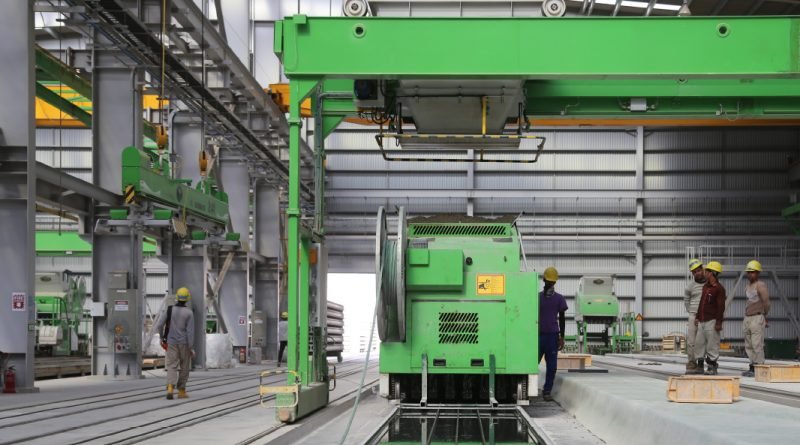Technology now and work in the future
If a robot is in the house, it does not necessarily mean somebody is going to lose their job! Currently, the Baltics ranks pretty low with regard to the number of robots per thousand employees, but it is interesting to look forward and review the worldwide trends. The Massachusetts Institute of Technology (MIT) reassured us with its recent report on the “Work of the Future” project, saying that robots, automation and artificial intelligence (AI), although they may look like the biggest threat to the workforce at present, will not result in crowds of unemployed and miserable workers.
DISPLACEMENT
The more than twenty faculty members at MIT did not deny the impact of technology on the job market. However, the largest concern is increasing inequality, which derives from the changing future of work in general. With technological progress, work is becoming more and more productive, and this trend has been seen over the last forty years. But workers have not benefited from this growth, the report claims. While environment
labour productivity has notably increased, the earnings did not particular grow when adjusted for inflation.
Also, the employees have experienced polarisation, which is driven by technology. According to the MIT researchers, highly educated workers have become more productive, while less-educated workers have become more easily replaceable.
SKILLS TRAINING
Between these sharply divided groups, there are the moderately-skilled workers, who basically are able to do standard tasks. This is also an area of concern, because every type of routine work will eventually be assigned to robots.
Accordingly, “Work for the Future” suggests simple and reasonable solutions as skills training. This is especially valuable advice for workers without a college degree. The researchers include colleges, apprenticeship programmes and online education as significant targets to invest in such training.
Tax incentives for enterprises that invest in their workers (e.g. by training them or educating them on-the-job) can be another governmental solution to avoid ending up with a pool of unskilled workers whose position in the labour market gets worse with every technological innovation.
PROGRESS OF ROBOTS
In summer of 2019, another report was released by Oxford Economics, company responsible for global forecasting and quantitative analyses. This report claims that by 2030, robots are predicted to occupy almost ten percent of all manufacturing jobs across the globe, which amounts to twenty million jobs in total.
The capabilities of robotic machines are progressing rapidly, and they are now able to perform tasks that were earlier entrusted to human employees. Next to automation and AI, Oxford Economics names technologically
advanced engineering, energy storage and machine learning as the main developments that will continue to move robots forward. Such a robotisation will be followed by the loss of tens of millions jobs in poorer local economies that rely on a low-skilled workforce. The forecast echoes the MIT claims about increasing inequality, as the majority of the displacement will be located in the lower-income areas in developed countries. With the rise of robots, inequality in income will increase, although the national productivity and economy will grow, creating possibilities for new jobs.
CHINA LEADS THE WAY
During the last twenty years, the number of robots in use has tripled and reached 2.25 million. In the next twenty years, the stock of robots worldwide will grow at an even faster pace, and China is will be the absolute leader in the robotic revolution, as fourteen out of the twenty million robots in the world will be operating there.
No one denies that the multiplying number of robots presents a challenge, primarily for governments. The impact of robotisation is not limited to the workplace – it will exponentially grow to affect the whole economy and society.
In a report called “The Future of Jobs 2018”, The World Economic Forum (WEF), an international organisation that engages the leaders of society to shape global, regional and industrial agendas, states that algorithms and intelligent machines are expected to create 133 million new roles globally within a period of three years. On the other hand, nearly 75 million jobs are predicted to be displaced by employing advanced technology. Overall, the mathematics allows us to stay positive, as the gain is 58 million jobs.
KNOWLEDGEABLE WORKERS
The numbers of highly-skilled workers, such as software engineers, data scientists, digital communicators and online specialists, are definitely on the rise. On the other hand, the WEF argues that the new assembly lines of data, as well as the specific and rarelymentioned aspects of artificial intelligence and machine learning, also require huge numbers of workers. What really matters for the future of AI are trainers in the fields of data and algorithms.
Apparently, the majority of machine learning techniques are now based on supervised learning. This can be described as repetitive showcasing, which is done by human employee to a computer. The computer is sequenced by specifying exactly what the example is for each algorithm, and how the computer ought to react to it every time. Eventually, after facing enough cases and solutions, the computer is able to make decisions by itself. The more data it learns, the better recognition it has.
BUILDING AI
Thus, human roles do not disappear in favour of machine learning. An army of workers is needed to keep specifying images, texts or other pieces of data: what is there, where it is, what it is doing, what features it has, or any other relevant specifications. And the word “army” certainly depicts the scope of the workforce needed to label almost every piece of data, because the numbers of cognitive tasks are as amazingly voluminous as the datasets are.
To better imagine the amounts, the WEF gives the following example: self-driving cars will generate 40 terabytes of data for every eight hours of driving. According to Waymo, one of the US companies manufacturing self-driving cars, they have already driven 16 million kilometres on public roads. The hours needed to drive these distances, multiplied by the terabytes of data gained during these hours, are equal to a huge amount of data.
Data is often named as the new “oil” to emphasise its importance in the economy, where technologies are becoming as essential as resources used to be, and where thousands of working hours are being created for humans, too.




